Views: 561

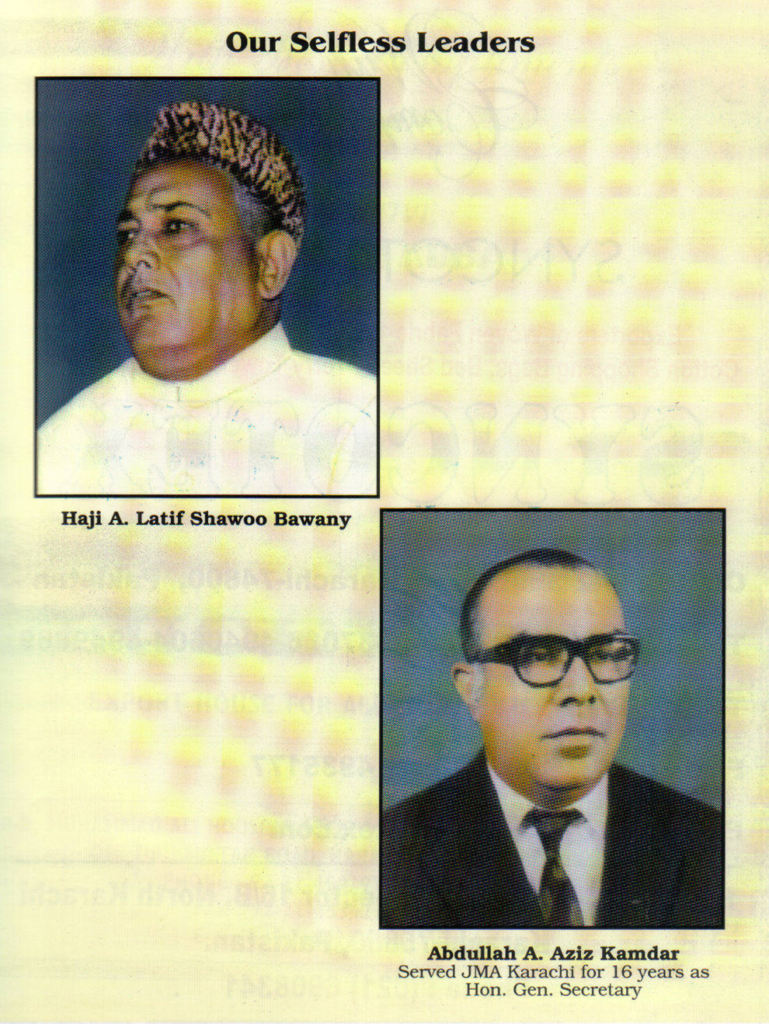
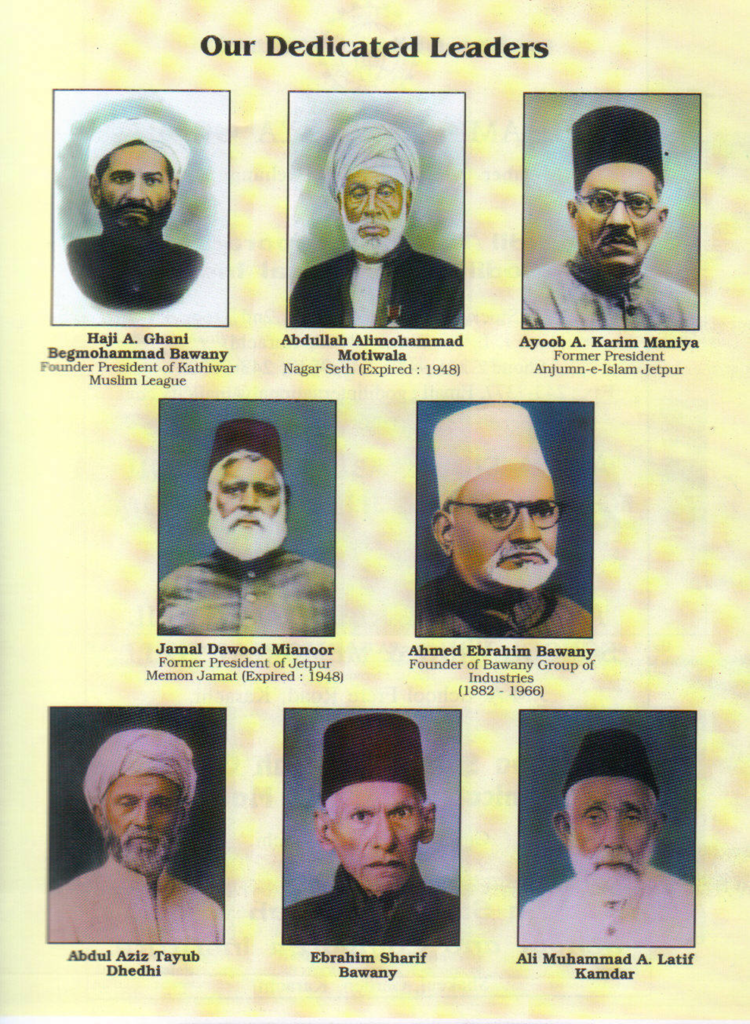
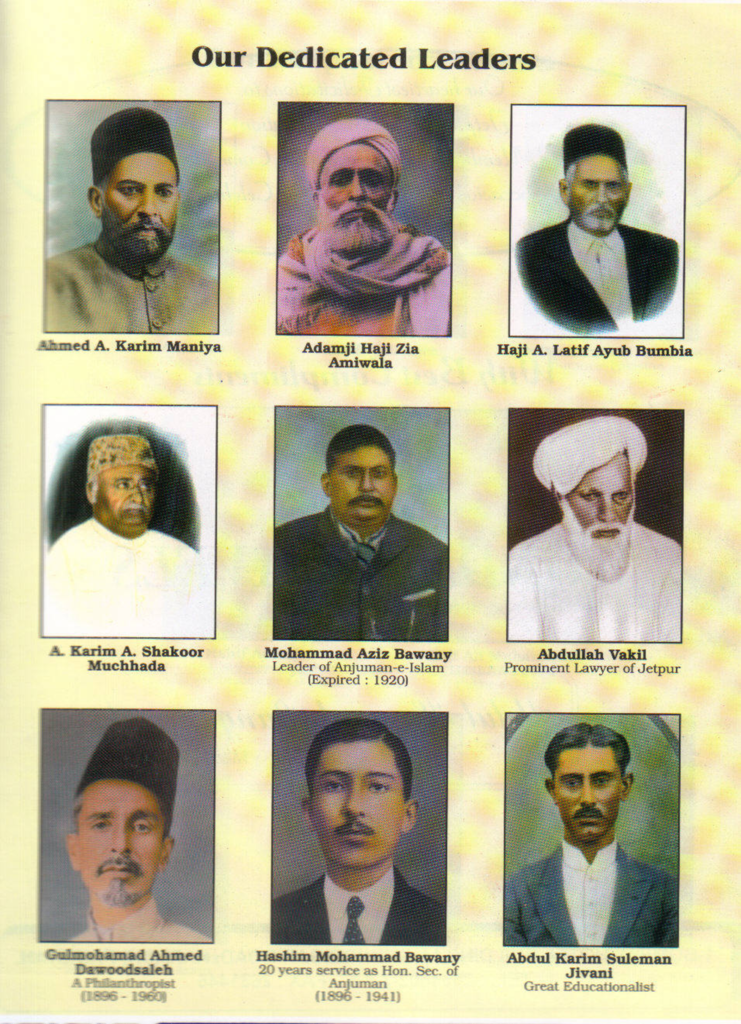
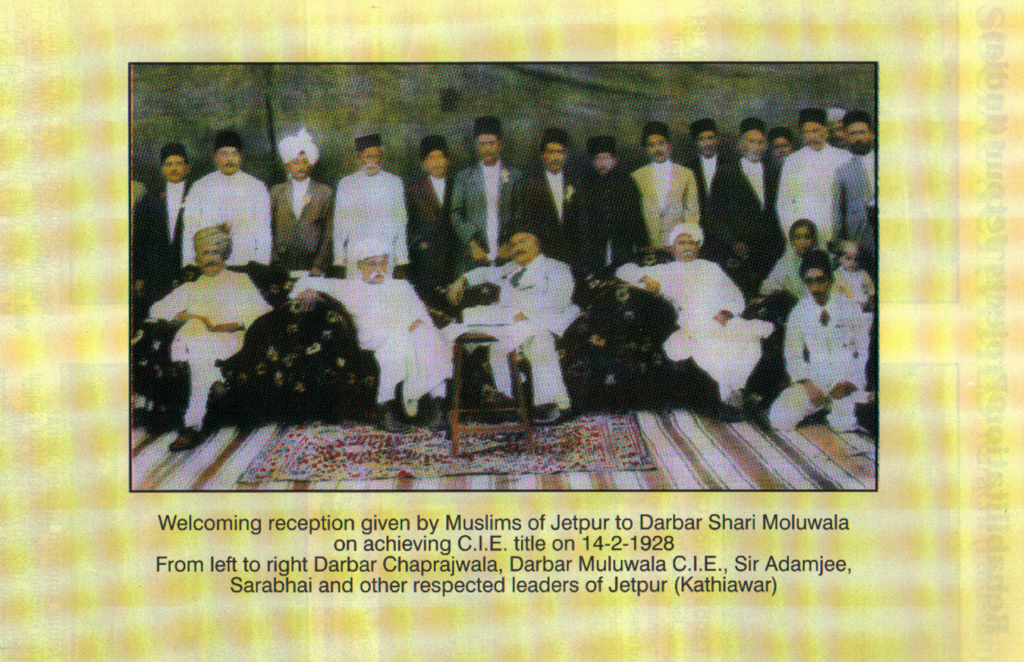
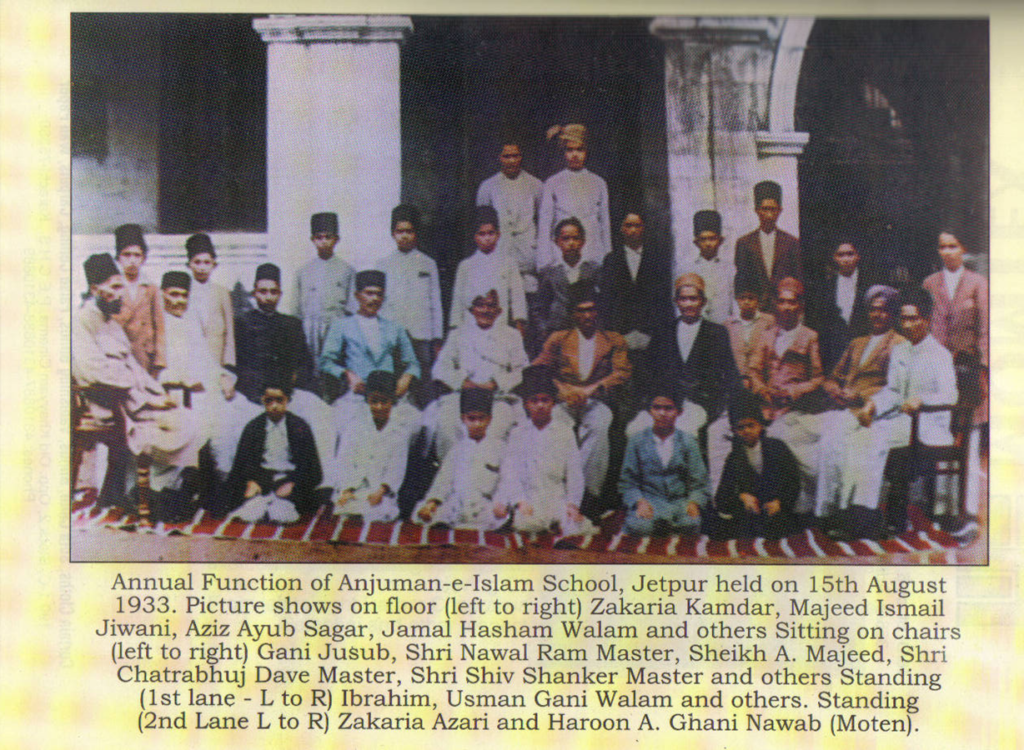
Freedom Struggle
Memons played a prominent role in the Indian Freedom struggle against British rule and occupation both physically and financially. By the close of the 19th Century, when the struggle assumed noteworthy proportions, a number Memons offered large donations to the movement, and some even courted imprisonment. Such notables were the Late Umer Sobhani and Sir Adamjee Haji Dawood, who spontaneously associated themselves and their families with Mrs. Annie Besant’s Home Rule League that spearheaded the freedom struggle. They joined the movement from its inception and gave liberally towards its expenses.
The Age of Depression:
During the War years the Memons amassed considerable wealth, which was invested in the importation of valuable goods, as well as in new industries and real estate. But after World War I ended, financial disasters overtook the Memons, as well as other major investors. Prices dropped dramatically and traders suffered heavy losses. In the chain reaction that followed Indian industry, which had prospered on account of the shortage and high prices of foreign goods during the war years, was forced to shut down. The value of industrial shares dropped dramatically, as well as the price of real estate, further adding to the woes of the business sector.
This was the age of depression. The collapse of the Indian commercial empire sent shock waves through the nation, as bankruptcy became the order of the day. However, most Memons, struggling to maintain credit in the commercial sector, managed to meet honor their financial commitments by resorting to extreme measures.
These measures included the sale of all their properties and other assets, as well as the traditional gold and precious ornaments of their women.
One result of this persistence in overcoming the depressed market at that time was the continuation of the Memon prominence in area of commercial enterprise. While others panicked and opted out, the Memons, despite the heavy losses sustained, endured the depression years and continued to trade.
But the chance to recoup and regain their prestige was blunted by yet another disaster—the post-war fall in the exchange value of the rupee. This phenomenon caused the Indian merchant had to pay twice the normal amount for imported goods. Since the Memons were heavily involved in the importation of goods, they suffered heavy losses.
Sometime later, when it seemed the commercial sector of India was set to recover, other losses seemed inevitable on account of the momentum gained by the combined efforts of the Khilafat Movement, the Non-co-operation Movement of India, and the Swadeshi Movement.
With the launch of the powerful Swadeshi Movement, there was spontaneous support for the boycott of British manufactured goods. Within a short time, British goods, valued at millions of rupees, piled up in godowns (warehouses). Nobody volunteered to buy when the goods were offered for sale well below cost. Eventually, due to pressure from the Indian boycotters, the accumulated merchandise all went up in smoke.
It must be recorded here that the Memons represented a substantial group involved in the importation of British manufactured goods and needed little encouragement to associate themselves with the founders of the Swadeshi Movement.
During the depression years, many Memons were forced to search in another direction for financial rewards. This time they invested heavily in real estate properties, which offered low returns but seemed secure. In the process, some dramatic changes in lifestyle took place. Creature comforts were curtailed to counter the evolving situation of limited income and high expenditure that highlighted the period.
As in earlier times, confronted as they were with numerous difficulties, the Memon spirit of adventure never waned. The political upheavals, the changing social patterns, the call of the professions and occupations, all combined to encourage Memon movement and settlement throughout India and the rest of the world. Wherever they went and settled, the Memons left lasting impressions through their mosques, their welfare, and educational institutions, and through their hospitals and Musafir khana’s, all of which emerged through Jamat’s (community-based organizations) established everywhere.
Ancestral Background and Population of Memon Community in
the World:
There are strong reasons to believe that the Memon Community came into existence simultaneously in Cutch and Sindh during the latter half of the 16th Century. The ancestors of most of the Memons were Lohanas, a Hindu business Community, and there was small mixture of other Communities also. The total population of the Memon Community is estimated at seven to eight hundred thousand at the most. Out of them more than four hundred thousand Memons live in Pakistan, nearly three hundred thousand in India, and seventy five thousand in other countries.
Generous Nature:
The Memon Community is basically a peace-loving business community. Memons are by nature generous, kind-hearted, and charitable people. Not only do they support their less fortunate Jamaat and community members by monthly maintenance allowances, scholarships and other necessities but also help humanity at large by establishing hospitals, maternity homes, orphanages, schools, colleges, industrial homes and other humanitarian activities, whose benefits are traditionally open for all people without dis- tinction of caste, color or creed. All large nation-wide funds start with the donations of Memons, who by and large are among the topmost donors.
Love for Religion:
Wherever the Memons have settled, they have first built a mosque and madrassa, and if their numbers were substantial, they also established a Jamaat. Many mosques built by Memons have become outstanding architectural landmarks of their cities. Such mosques include Zakaria Masjid of Calcutta, Minara Masjid of Bombay, New Memon Masjid of Karachi, and Baitul Muqarram Masjid of Dacca. Memons have also built large mosques in the countries spread from Japan to South Africa. The Jama Masjid of Durban built by the Memons is the largest mosque in the Southern Hemisphere.
Service for the Promotion of Education:
The Memon Community has established innumerable madrassas, schools, colleges and technical institutes, whose benefits are open to all Memons and non-Memons alike.
Educational Services before Independence:
A Memon philanthropist, Sir Yusuf Ismail, established a “NAUTICAL & TECHNICAL INSTITUTE” at Nassau Island near Bombay in 1910 to train Indian youths in Marine Technology, which was until then a monopoly of the British. This institute was later developed into a Marine College, which was the first and only college of its kind for some decades.
Sir Yusuf Ismail also established Ismail Yusuf College in memory of his great uncle at Bombay in 1930 at the cost of three million rupees. This college is counted among the best colleges in India.
Mohammad Haji Sabu Siddiq, who died at the young age of 25 years, established Sabu Siddique Technical High School in Bombay in 1920, which was the first non-government technical high school of its kind in the Bombay Presidency. This high school has since flowered into a large Technical Institute.
Memons in National Movements:
All India Khilafat Committee was established in Bombay in 1919 at a meeting of Muslim leaders held at Chhotani Manzil, the residence of Seth Mohammad Mian Jan Mohammad Chhotani. He was elected President of the organization and remained at the helm of affairs during the most active four years of the committee.
Abdullah Haroon was the main creator of the First Province of Pakistan in
1937. After continuous efforts covering more than a decade, he was able to separate Singh from the Bombay Presidency, mainly based on religion.
Abdullah Haroon, in his speech as the chairman of the Reception Committee of Sindh Muslim League Conference held in Karachi in October 1938, urged adoption of a policy that would ultimately lead towards the creation of “Hindu India” and “Muslim India” in the sub-continent. The League Council in its Delhi session in December 1938 formed a committee for the purpose, with Abdullah Haroon as its Chairman.
Of the many schemes presented at Lahore session of Muslim League in March 1940, the scheme finally selected was known as “Abdullah Haroon Committee Scheme,” which demanded two Muslim states, one in the Northwest and the other in the Northeast of the sub-continent. The resolution based on this scheme was passed in the session and became better known as the “Pakistan Resolution.”
Pioneer Reformers and Educationalists
Abdullah Haroon established Hajiyani Hanifabai Girls School in Karachi in 1914, which was the first school in Sindh for Muslim girls.
Ghani Baiga was the first prominent Memon educationalist. He covered four Kathiawar Muslim Educational Conferences in the second and third decade of the present century and tried to spread education among the backward Muslims of Kathiawar.
Adamjee Haji Dawood concentrated his efforts on the education of the Memon community through the establishment of Memon Educational and Welfare Society, which proved to be a phenomenal success.
Barrister A. Sattar Wali was one of the most active social reformers in the late 1920s and early ’30s. He published a hard-hitting Gujarati magazine called Memon Reformer, traveled widely, and squandered his whole fortune to propagate his reformist views. In the end he died as pauper in a charity hospital in Karachi.
Suleiman Bhura was famous reformer who valiantly fought for the pro- mulgation of Mohammedan Law in the native states of Kathiawar. He was also the founder of Madrassa-e-Islamia chain of schools in Karachi under the banner of Memon Education Board.
Hajiyani Khadija, although an illiterate widow, was the founder of Raunaq-eIslam chain of girls’ schools, colleges, and industrial homes under the banner of the Pakistan Memon Women’s Educational society. “Salik Papatia” compiled the Gujarati Reader, or Sahitay Sindhu, for the Gujarati students of secondary schools in the early sixties, having secured its publication at his own expense.
Mohammad Usman Haji Hasham, who died at the young age of 38 years, spread the light of education among the Okhai Memon youngsters through Okhai Memon Youth services, of which he was the Founder President.
Some pictures of Mohammad Ali Jinnah while he visited Khatiawar for a fund-raising campaign for the independence of Pakistan.

L to R sitting: Nizamuddin Qureshi, Khandwani, I I Chundrigar, Mohammad Ali Jinnah, Haji Dada Valimohammad Modi, Mohammad Ali Chaiwala, Usman Isa Bhai Wakil.
In the back row Haji Omar Machiswala and other muslim leaders

From L to R (front row) Ismail Ibrahim Chundrigar, Ali Bhai Jaweri, Mohammad Ali Cahaiwala, Khandwani, Mohammad Ali Jinnah, Haji Habib Tar Janu, Omar Machiswala, Nizamuddin Qureshi
Back row: Abdulrahim Marfani, Usman Isa Bhai Wakil, Haji Dada Valimohammad Modi, Abdul Ghani Meghani, Hakim Marfani, Haji Abdulrazzak Janu.

Ayub Abdulkarim Manya and Mohammad Ali Jinnah with other Muslim leaders.

With Mohammad Ali Jinnah are Valimohammad Aba Andha, Alimohammad Kamdar, Mohammad Moosa Mukati, Zakaria Ahmed Bawany, Abdullah Miannoor, Ahmed Adamjee Bhakrani and Ayub Abdulkarim Manya.